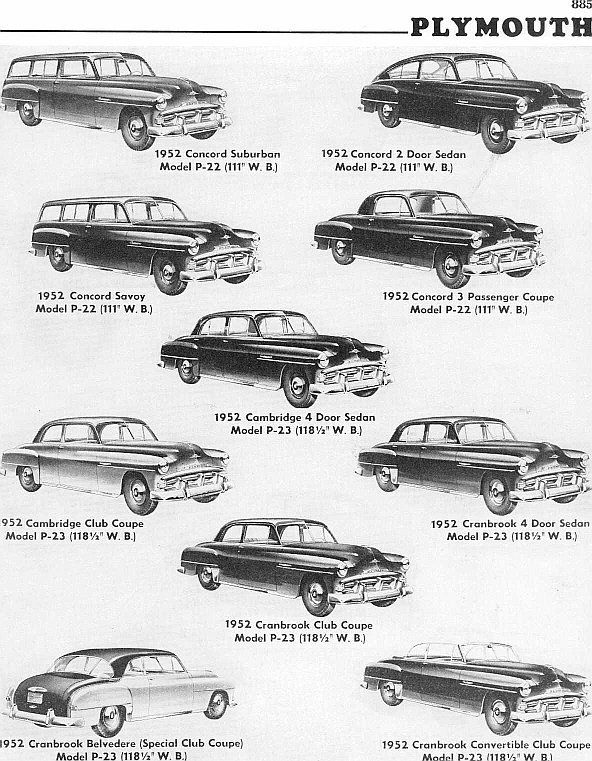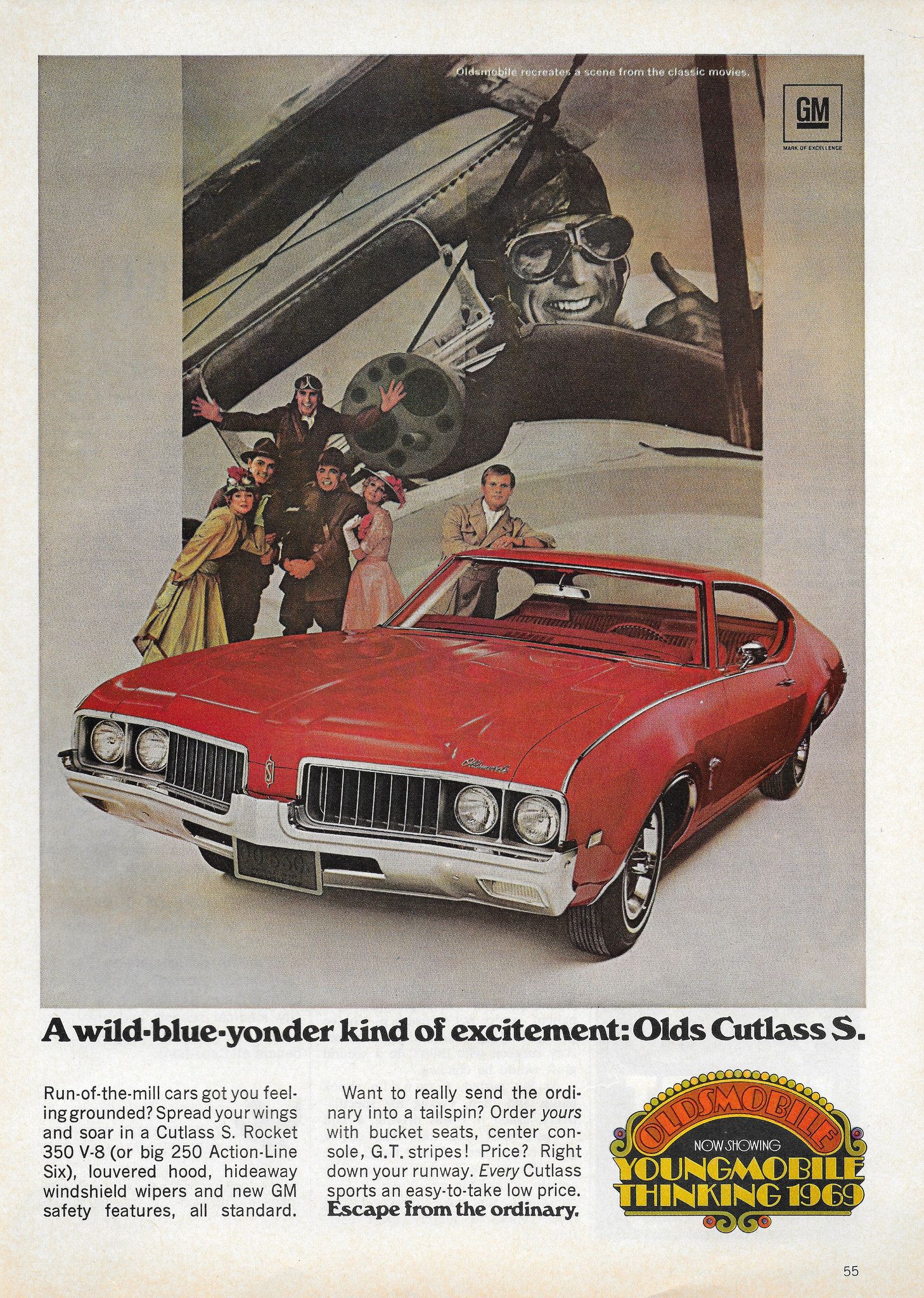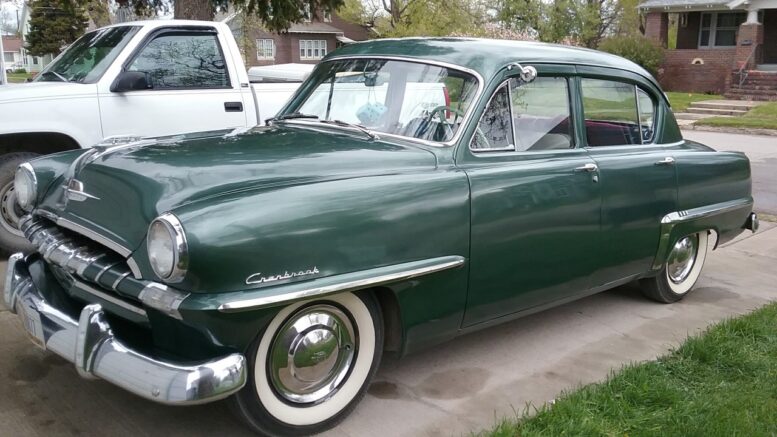We’re answering two letters this week, as our mailbag is full!
1953 Plymouth Cranbrook
Q: Greg, you may like the late 50’s cars with all the fins, V8 engines, excess chrome, etc., but I really enjoy my daily summer driver of a 1953 Plymouth Cranbrook Sedan out here in Montana. The old flathead straight-6 is reliable and extremely easy to work on when any issues arise.
I also enjoy exceptional parts availability out here because those Chrysler division motors were used in farming Swathers and Combines until the late 70’s. That makes it very simple to stop at any auto supply and many farm supply stores to find parts easily.
Just my thoughts on cars from the 1950’s – I like the early 50’s because they were solid, reliable and plain. People really like my Plymouth because it’s just an old, well cared for survivor, and I drive it in all kinds of weather and take people for memorable rides in it.
I see your columns on Google News on the Internet because I look at old cars and motorcycles. Your columns come up as an article of possible interest to me. I was also in an article of old cars weekly back in mid-April as one of the cars of interest. I know they made a bunch of my cars but the collector interest was not there for them, so very few have survived as compared to the mid or later 50’s with the V-8’s in them.
Thanks, and keep on enjoying old vintage vehicles because old stuff is cool!
Ken Hunter, email from Montana.

In 1952 Plymouth offered three trims, including a smaller Concord and larger Cambridge and Cranbrook models. Plymouth dropped the smaller Concord trim for 1953. (Compliments Fiat Chrysler)
A: Ken thanks for your letter and kind words. I remember the Cranbrook well, as one of the people on our Ranshaw, Pa. block bought a brand new ’53 Plymouth Cranbrook that his son fell out of the back door while playing with the handle. Lucky the driver was going slow and the boy was uninjured.
The Cranbrook was built from 1951 to 1953, and replaced the Special Deluxe, mostly in name only. However, the 1953 Cranbrook was an all-new design with a sleeker body and one-piece front windshield. Back then the word “amenities” probably wasn’t used as it is today, and additions were few when it came to driver and passenger luxuries.
Being that Plymouth was Chrysler’s best-selling brand and built for the lower to middle class consumer it sold well to the baby boomer’s moms and dads at reasonable prices. The Cambridge was another trim line, just below the Cranbrook, and there were also Concord trims in three-window, three-passenger coupes and fastback sedans available in ’51 and ’52. Concord was dropped for the new 1953 model year as Cranbrook and Cambridge now rode on a 114-inch wheelbase, one-inch shorter than the Chevrolet and Ford competitors. In 1952, Plymouth came in either 111-inch wheelbase (Concord) or 118.5 (Cranbrook and Cambridge).
In 1954, the Cranbrook became the Belvedere for good, previously being the top trim level of the Cranbrook. Notable is that the names Cambridge, Cranbrook, and Belvedere were all names of popular hotels of the day in the Detroit area. Of these names Belvedere lasted the longest, right on through 1970 in many different power combinations from flathead-6 to a 426 Hemi. Similar to the Cranbrook Belvedere, the Belvedere continued as Plymouth’s full-sized car until 1965 when it became an intermediate, and was replaced after the 1970 model year by the Satellite, which was previously the Belvedere top-trim level.
Additionally, you are correct Ken that because the Cranbrook was never considered a collectible vehicle as the years went on, not many remain these days. Take good care of your Cranbrook, as I’m sure it attracts lots of attention as your daily driver. Thanks again for your letter.
‘Little 442’ Oldsmobile
Q: Greg I enjoy your column very much and the variety of automotive topics you cover. I have a 1969 Oldsmobile Cutlass S convertible that I have owned for 15 years. The car is mostly original except for a repaint of the original color before I bought it.
Since owning this car I have come to realize most people have no idea Olds made the Cutlass S. While it’s not a Chevy SS it is still a strong and fast vehicle and could compete with any other GM small block of the same vintage.
Most people assume the S stands for Supreme, but the Cutlass S is its own model and basically the small block version of the 442. I’d like to know your take on the Cutlass S. George Helwig, South Kingstown, Rhode Island.

The 1969 Olds Cutlass S was known as a “small block 442” and offered performance, looks and sturdy suspension all hooked to a 350 Rocket V8. It was a very popular Cutlass, but the “S” did not stand for Supreme as many think. (Compliments General Motors)
A: George thanks for being a fan of my work and it’s much appreciated.
The “S” is indeed a sporty Cutlass model, but there was never any special designation from Oldsmobile other than the “S” stood for, well, “S.”
I agree it was “the small block 442,” and assembled without the larger 442 V8 engines that measured 400 or 455 cubic inches. The ’69 Cutlass S was the first Olds to use a Turbo 350 automatic while the 442 relied on the beefier Turbo 400. The engine in the S was an Olds built 350 that ran very well for its size and delivered 310 horses with a 4-barrel. The S used the same wheel well trims and the same rear tail lenses as the 442, and also came with a louvered hood.
Typically a two-door pillared sport coupe or Holiday hardtop (no pillar) with the V8, there were some S models that were ordered with a 2-barrel carb instead of the Rochester 4-barrel. My uncle had a ’69 Cutlass S and I remember the night someone stole the 4-barrel carb off it as it sat in our driveway!
Typicall, these Cutlass S models were popular with many different consumer classes and fine looking cruisers on the boulevard. I used to compare them to the Chevelle coupes with the 327 and 350 small blocks back then. All ’68 and ‘69 Cutlass S V8 models came with GMs 12-bolt rear ends, making them sturdy under heavy acceleration.
Notable is that the Oldsmobile Cutlass in all its varieties became America’s best-selling car in 1976. Thanks for your letter and take care of your Cutlass S ragtop.
(Greg Zyla is a syndicated auto columnist who welcomes reader questions on collector cars, auto nostalgia ad motorsports at greg@gregzyla.com.)



Be the first to comment on "Cars We Remember: 2 for 1 Special ’53 Plymouth and ’69 Olds"